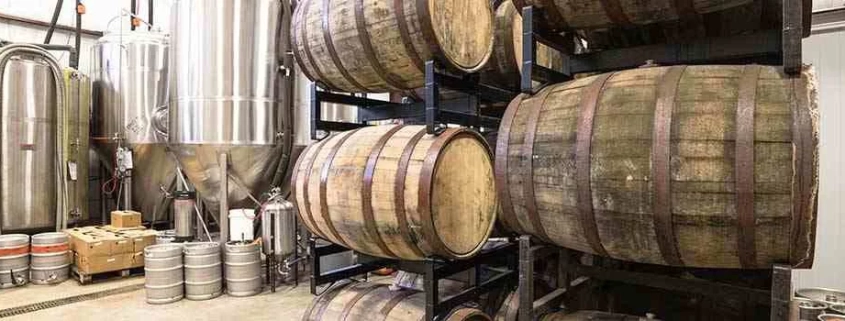CO2 Hazards in Wineries and Breweries
CO2 risk in winemaking It is a great danger. Indeed, during alcoholic fermentation of wort 1 liter of wine will produce 44 liters of CO2 ! Other secondary compounds such as ethanol, glycerol, succinic acid and aromatic compounds (esters) will also be released. The danger of SO2 during the last step, sulfation, is another important risk…
Danger of CO2 in winemaking
wine making The greatest danger during the process (pressing, wort fermentation, devatting, tank cleaning) carbon dioxide It is related to the release. This dangerous gas is both suffocating and poisonous. CO2 (carbon dioxide) – carbonic gas Also known as – is a colorless and odorless gas that is heavier than air.
Decrease in oxygen content, It is not a reliable indicator of the presence of CO2 in the air. It is indeed possible to have a sufficient oxygen content of 19% and a dangerous – or lethal – CO2 concentration level of 10%. Monitoring this gas with a CO2 monitor, especially for wineries must . This device can be a portable gas detector (as personal protective equipment) or a fixed CO2 gas detector installed in wineries.
SO2 danger in sulfidation
Sulfur dioxide It is used in various stages of winemaking. Its antiseptic properties prevent the production of harmful microorganisms such as bacteria. Its presence in bottles prevents a second wine fermentation or vinegar production. Sulfur dioxide is also an antioxidant that prevents wine from taking on a cider taste.
Sulfur dioxide (SO2) It is most commonly used in the final step – bottling. During this process, many precautionary principles should be adopted. Sulfur dioxide, which is also corrosive and harmful, is above all an R23 and R24 toxic gas. This means it is toxic when inhaled and causes respiratory irritations and burn injuries.
CO2 danger in the brewery
One of the biggest dangers in the fermented beverage industry is entering a confined space filled with gases produced or accidentally released during brewing. Leaks can also release other harmful gases, such as ammonia used in cooling systems.
Risk of CO2 poisoning for brewery workers, It persists throughout the beer-making process. During fermentation, brewer's yeast converts sugar into alcohol and releases carbon dioxide. CO2 can cause discomfort even at low concentrations.
Before entering a tank or other enclosed space in breweries, the CO2 concentration should be measured using an appropriate CO2 monitor. This is the only reliable method of checking whether the CO2 concentration is truly at a safe level. CO2 must then be completely removed, especially in beer fermentation tank rooms.
Both portable and fixed CO2 detectors can be used for CO2 monitoring to improve brewery safety. In some countries, CO2 hazards in the beer industry are regulated by associations and official government bodies. Like OSHA brewery regulations that ensure the safety of breweries and brewery workers in the US.
Ethanol and alcoholic fermentation
Fermentation converts grape juice into ethanol (ethyl alcohol) is a natural chemical process where it is converted into . This process results from the reaction of the sugar in the grape pomace and the yeast found in the grape seed skin. Since ethanol (C2H6O) vapors can explode , they pose a potential explosion risk in case of leakage. Therefore, in order to reduce the dangers of ethanol, we must prevent the presence of this gas. Monitoring with a flammable gas detection device is highly recommended.
Winemaking and brewery gas detection equipment
For the winemaking and brewing industries, a portable CO2 detector It is essential to use one every day for this crash test is necessary. For larger structures, a CO2 fixed system should be installed along with any necessary warning devices…



